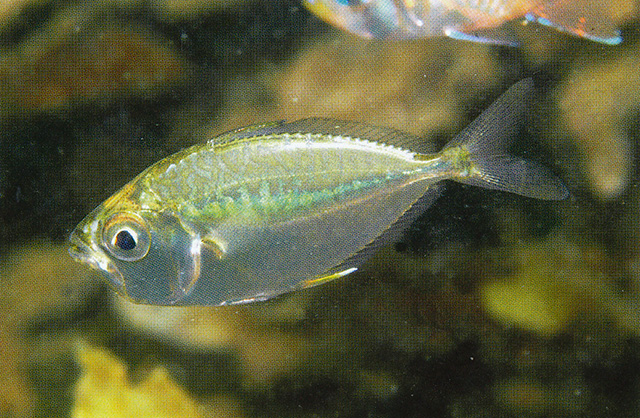| Leiognathidae (Slimys, slipmouths, or ponyfishes), subfamily: Gazzinae |
| 21 cm FL (male/unsexed) |
|
demersal; brackish; marine; depth range 10 - 110 m |
| Indo-Pacific: Red Sea and the east African coast (30° to about 50°S) to Australia and Tahiti, north to the Ryukyu Islands (Ref. 27956). |
|
Dorsal spines (total): 8-8; Dorsal soft rays (total): 15-17; Anal spines: 3-3; Anal soft rays: 13-14. Description: Body silvery with vermiculations irregular yellow on dorsal side up to midlateral; dorsal, pectoral and pelvic fins colorless; dorsal fin spinous membrane margin black; anal fin anterior yellow. Nuchal spine on nape. Mouth pointing forward when protracted. Head and breast scaleless. Scales minute. Body depth max 2.0-2.5 in SL. (Ref. 2108, 90102) |
| Found in shallow inshore coastal waters over silty bottoms (Ref. 30573, 90102). Young enters mangrove estuaries or silty reef areas (Ref. 4833, 90102). Searches for prey using a protruding pipette-like mouth or by sieving potential food through their gill rakers (Ref. 26569). Feeds on small fishes, shrimps, other crustaceans, and polychaetes. Sold fresh and dried salted; also made into fishmeal. |
|
Least Concern (LC); Date assessed: 02 July 2016 Ref. (130435)
|
| harmless |
Source and more info: www.fishbase.org. For personal, classroom, and other internal use only. Not for publication.

